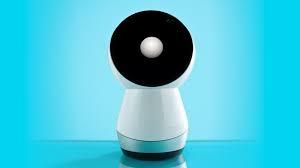
Wearables, robots, monitors, and IT systems for long-term care and delivery systems.
Part I Overview, Watson, Analytics
Part II digital devices, long term care.
Part III Apps, devices, roadblocks
At a recent health systems innovation organized the MIT/Sloan MIT Initiative for Health Systems Innovation (HSI), experts from a variety of fields described current and envisioned methods for streamlining, personalizing and cutting the costs of health care in the US. Among them were : wearables; robots; sophisticated monitors; and digital methods to better coordinate communication and care.
Long Term care
 On a panel covering digital innovation and long-term care, Thomas Grape, founder, chairman and CEO of Benchmark Senior Living, described a variety of digital devices and methods used in his more than 60 facilities and elsewhere to improve care, streamline operations and cut costs amid a projected shortage of elder care workers.
On a panel covering digital innovation and long-term care, Thomas Grape, founder, chairman and CEO of Benchmark Senior Living, described a variety of digital devices and methods used in his more than 60 facilities and elsewhere to improve care, streamline operations and cut costs amid a projected shortage of elder care workers.
Among digital innovations for patient care are:
- “Real time” monitoring and location systems to keep track of patients in dementia wards
- Wearables (such as vests or bracelets) with sensors that monitor movement to prevent falls
- Virtual and augmented reality devices such as “Wayback,” designed to enhance the experiences of individuals in early stages of mental decline—for example, by allowing them to “visit” faraway places or feel that they are attending historic events.
- Robots, such as”Jibo,” to keep patients company and entertain them. The robot, Jibo is “powered” by face and voice recognition. According to the Jibo Web site, the robot “remembers” people and builds “relationships” with everyone “he” meets.
 Engineered by “character designers,” the robot has a “3-axis motor system” and “the moves” to match the personality of the human it is interacting with.
Engineered by “character designers,” the robot has a “3-axis motor system” and “the moves” to match the personality of the human it is interacting with. - Monitors that respond catastrophic events and proceed along“critical paths”: for example, by calling an ambulance and transferring a nursing home resident’s file even before a nursing home knows a patient has fallen and needs to go to the hospital.
Digital innovations for facilities and operations aimed, largely, at reducing staffing costs include:
- Monitors to measure light levels in hallways
- Exoskeletons, worn by staff to cut the number of aides needed to lift and assist patients
- Robotic machines to help people in and out of chairs and toilets
- Automation of repetitive” back-office” business tasks.
Healthcare Delivery and Health Management
IT-Based Startups
On a panel showcasing three young companies, entrepreneurs described new methods for streamlining and coordinating healthcare delivery and management.
- Elliot Cohen, founder and chief technology officer of Pillpack, described his company’s “behind the scenes” effort to make managing and taking medication a “delightful” experience for patients. “Pillpack” uses information technology to coordinate physicians’ prescriptions and insurance companies in order to prepackage and send medication to patients exactly as it will be taken.

- Liz Boehm, research director of the Vocera Communications Experience Innovation Network explained that her company is focused on “unified clinical communications.” Vocera employs digital technology to align and manage workflow by connecting patients, clinicians, and clinical systems.
- Health Reveal offers “a cloud-based digital health solution” to detect, monitor, and recommend prevention options for patients at risk for developing full-blown chronic disease, according to Christine Tsien Silvers, MD, the company’s chief medical officer. The system, paid for by insurers, includes not only purchasers, payers, providers and accountable care organizations but also patients, (who receive financial incentives for adherence to recommendations), pharmaceutical companies and device manufacturers, Silvers said.
In Part 3, I’ll describe promising mobile apps for behavioral health; personalized care and long-distance care as well as new state models to integrate community, health and social systems so as to better track and care for patients. I’ll also report on roadblocks to change.
LINKS TO
Part I Overview, Watson, Analytics
Part II digital devices, long term care.
Part III Apps, devices, roadblocks
Videotapes and photos of the conference, held November 29, 2017, are available at http://mitsloan.mit.edu/alumni/events/2017-cambridge-health-conference/
–Anita M. Harris
Anita Harris is a writer and communications consultant focusing on health, science and technology.
New Cambridge Observer is a publication of the Harris Communications Group, a content and digital marketing firm based in Cambridge, MA.



